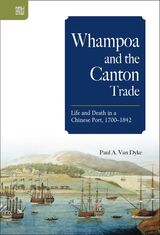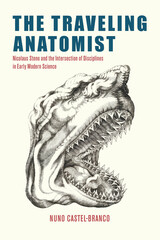2 books about Canton Trade

The Many Names of Anonymity
Portraitists of the Canton Trade
Winnie Wong
University of Chicago Press, 2025
Explores how the function, norms, and meaning of artists’ names in Chinese modernity have been misunderstood.
Challenging contemporary procedures for establishing attribution, chronology, and authenticity in Chinese art, Winnie Wong explores the means, methods, and stakes of recovering the names of an anonymous community of artists. To examine how Western art history has misconstrued and miscategorized names and identities in Chinese art, she looks to conflicting features of modernity: the European attachment of singular names to individuals and their works, and the Chinese use of socially contingent names that often are not attached to material labor and sometimes operate against it. Wong charts the genealogy of this naming problem by bringing to life the artists of the Qing Empire’s trade with Europeans at the port of Guangzhou, centering on a group of portraitists known by names that were recorded in a pidgin language: Chin Qua, Chit Qua, Spoilum, Lam Qua, and Ting Qua.
Many of these paintings survive today, yet scholars have identified only a handful of the painters’ identities. Pushing against Western norms that have shaped our understanding of authorship, Wong reveals that these artists shared names, created works in multiples, and signed their pieces with different names or none at all. This lavishly illustrated volume explores portraiture across media, including unfired clay, reverse painting on glass, watercolor on paper, oil on canvas, and the daguerreotype, to propose new ways of studying anonymity, copying, and the emergence of author names in the Sino-European visual culture of the long eighteenth century.
Challenging contemporary procedures for establishing attribution, chronology, and authenticity in Chinese art, Winnie Wong explores the means, methods, and stakes of recovering the names of an anonymous community of artists. To examine how Western art history has misconstrued and miscategorized names and identities in Chinese art, she looks to conflicting features of modernity: the European attachment of singular names to individuals and their works, and the Chinese use of socially contingent names that often are not attached to material labor and sometimes operate against it. Wong charts the genealogy of this naming problem by bringing to life the artists of the Qing Empire’s trade with Europeans at the port of Guangzhou, centering on a group of portraitists known by names that were recorded in a pidgin language: Chin Qua, Chit Qua, Spoilum, Lam Qua, and Ting Qua.
Many of these paintings survive today, yet scholars have identified only a handful of the painters’ identities. Pushing against Western norms that have shaped our understanding of authorship, Wong reveals that these artists shared names, created works in multiples, and signed their pieces with different names or none at all. This lavishly illustrated volume explores portraiture across media, including unfired clay, reverse painting on glass, watercolor on paper, oil on canvas, and the daguerreotype, to propose new ways of studying anonymity, copying, and the emergence of author names in the Sino-European visual culture of the long eighteenth century.
[more]

Whampoa and the Canton Trade
Life and Death in a Chinese Port, 1700–1842
Paul A. Van Dyke
Hong Kong University Press, 2020
Paul A. Van Dyke’s new book, Whampoa and the Canton Trade: Life and Death in a Chinese Port, 1700–1842, authoritatively corrects misconceptions about how the Qing government treated foreigners when it controlled all trade in the Guangzhou port. Van Dyke reappraises the role of Whampoa in the system—a port twenty kilometres away from Guangzhou—and reassesses the government’s attitude towards foreigners, which was much more accommodating than previous research suggested. In fact, Van Dyke shows that foreigners were not bound by local laws and were given freedom of movement around Whampoa and Canton to the extent that they were treated with leniency even when found in off-limit places. Whampoa and the Canton Trade recounts the lives of seamen who travelled half-way around the globe at great risk and lived through a historic period that would become the framework for subsequent encounters between China and the rest of the world. Were it not for the exchanges between the major powers and the Qing empire, the world—as we know it—would be a rather different place. Hence, Van Dyke’s command of data mining shows that Whampoa was a key pillar in the Canton System and, thus, in the making of the modern world economy.
[more]
READERS
Browse our collection.
PUBLISHERS
See BiblioVault's publisher services.
STUDENT SERVICES
Files for college accessibility offices.
UChicago Accessibility Resources
home | accessibility | search | about | contact us
BiblioVault ® 2001 - 2025
The University of Chicago Press









